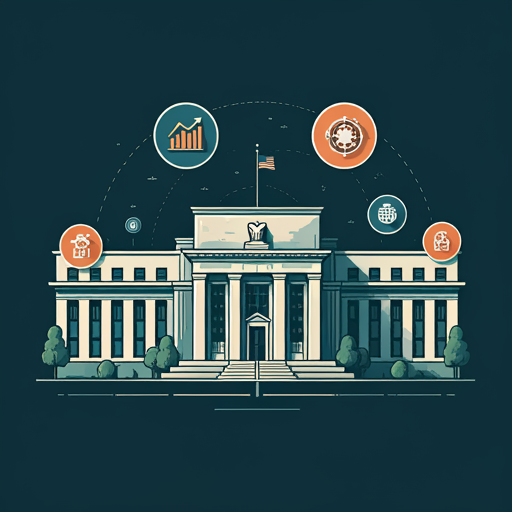Introduction to the Federal Reserve’s Role
Understanding the Federal Reserve System
The Federal Reserve System serves as the central bank of the United States, playing a crucial role in the nation’s monetary policy. It regulates the money supply and aims to achieve maximum employment and stable prices. This dual mandate is essential for fostering a healthy economy. Understanding its functions is vital for financial professionals. The Fed influences interest rates through open market operations. This can affect borrowing costs for consumers and businesses alike. It’s fascinating how these decisions ripple thtough the economy. The Fed’s actions can create significant market reactions. Investors must stay informed.
The Importance of Monetary Policy
Monetary policy is crucial for economic stability and growth. It directly influences inflation and employment rates. By adjusting interest rates, he can stimulate or cool down the economy. This flexibility is essential for responding to economic fluctuations. Effective monetary policy fosters consumer confidence and investment. It shapes the financial landscape significantly. Understanding its implications is vital for investors. Knowledge is power in finance.
Key Components of Monetary Policy
Interest Rates and Their Impact
Interest rates are a fundamental component of monetary policy, influencing economic activity significantly. When he raises rates, borrowing becomes more expensive. This can lead to reduced consumer spending and investment. Conversely, lower rates encourage borrowing and stimulate growth. The relationship between rates and inflation is critical. Higher rates can help control rising prices. Understanding this dynamic is essential for financial decision-making. Knowledge is key in finance.
Open Market Operations Explained
Open market operations are a primary tool used by the Federal Reserve to regulate the money supply. By buying or selling government securities, he can influence liquidity in the banking system. When the Fed purchases securities, it injects money into the economy. This action lowers interest rates and encourages borrowing. Conversely, selling securities withdraws money from circulation. This can help control inflationary pressures. Understanding these operations is essential for financial professionals.
Recent Monetary Policy Decisions
Analysis of Recent Rate Changes
Recent rate changes have significant implications for the economy. The Federal Reserve’s decisions can live summarized as follows:
These adjustments aim to stabilize prices while promoting employment. When rates rise, borrowing costs increase. This can slow down consumer spending. Conversely, lower rates stimulate economic activity. Understanding these dynamics is crucial for investors. Knowledge is essential for informed decisions.
Quantitative Easing and Tightening
Quantitative easing (QE) involves the Federal Reserve purchasing securities to increase the money supply. This strategy aims to lower interest rates and stimulate economic growth. Recent actions included significant asset purchases. These measures have led to increased liquidity in the financial system. Conversely, quantitative tightening (QT) involves reducing the balance sheet. This can lead to higher interest rates and decreased money supply. Understanding these policies is essential for market participants. Knowledge is crucial for strategic planning.
The Federal Reserve’s Influence on Cryptocurrency
Market Reactions to Policy Announcements
Market reactions to Federal Reserve policy announcements can significantly impact cryptocurrency prices. When he signals a shift in monetary policy, volatility often ensues. For instance, interest rate hikes typically lead to a sell-off in risk assets, including cryptocurrencies. This occurs as investors seek safer investments. Conversely, dovish signals can boost crypto prices, as lower rates encourage risk-taking. Knowledge is essential for making informed decisions.
Cryptocurrency as a Hedge Against Inflation
Cryptocurrency is increasingly viewed as a hedge against inflation. As central banks, including the Federal Reserve, implement expansive monetary policies, concerns about currency devaluation rise. This environment often drives investors toward digital assets. Bitcoin, for example, has a capped supply, making it attractive during inflationary periods. When fiat currencies lose purchasing power, cryptocurrencies can retain value. This dynamic is crucial for portfolio diversification. Understanding these trends is essential for informed investing.
Future Outlook for Monetary Policy
Predictions for Interest Rate Trends
Predictions for interest rate trends suggest a cautious approach from the Federal Reserve. Analysts anticipate potential rate hikes in response to persistent inflation. This could lead to tighter monetary policy in the coming months. Higher rates may slow economic growth, impacting consumer spending. Conversely, if inflation stabilizes, the Fed might pause increases. Understanding these scenarios is vital for investors. Knowledge is essential for strategic planning.
Potential Impacts on the Crypto Market
Potential impacts on the crypto market are closely tied to future monetary policy. If the Federal Reserve raises interest rates, he may see reduced liquidity in the market. This could lead to decreased investment in riskier assets, including cryptocurrencies. Conversely, a dovish stance may encourage more capital flow into digital assets. Investors often seek alternatives during inflationary periods. Understanding these dynamics is crucial for strategic decision-making.
Conclusion: Bridging Traditional Finance and Cryptocurrency
Lessons for Cryptocurrency Investors
Lessons for cryptocurrency investors emphasize the importance of understanding market dynamics. He should closely monitor monetary policy changes, as these can significantly impact asset prices. Diversification remains a key strategy to mitigate risks. Additionally, staying informed about regulatory developments is crucial. These factors can influence market sentiment and investment decisions. Knowledge is essential for navigating volatility. Investors must remain adaptable in a rapidly changing landscape.
The Evolving Relationship Between Crypto and Central Banks
The relationship between cryptocurrencies and central banks is evolving rapidly. As digital assets gain popularity, central banks are exploring their own digital currencies. This shift aims to enhance payment systems and maintain monetary control. He recognizes the potential benefits of blockchain technology. However, regulatory challenges remain a significant concern. Central banks must balance innovation with financial stability. Understanding this dynamic is crucial for investors.
